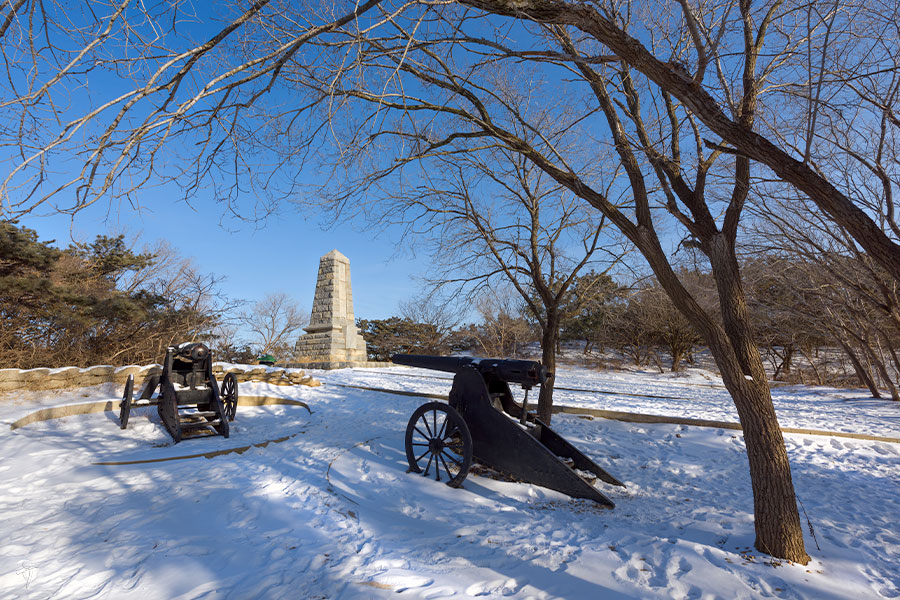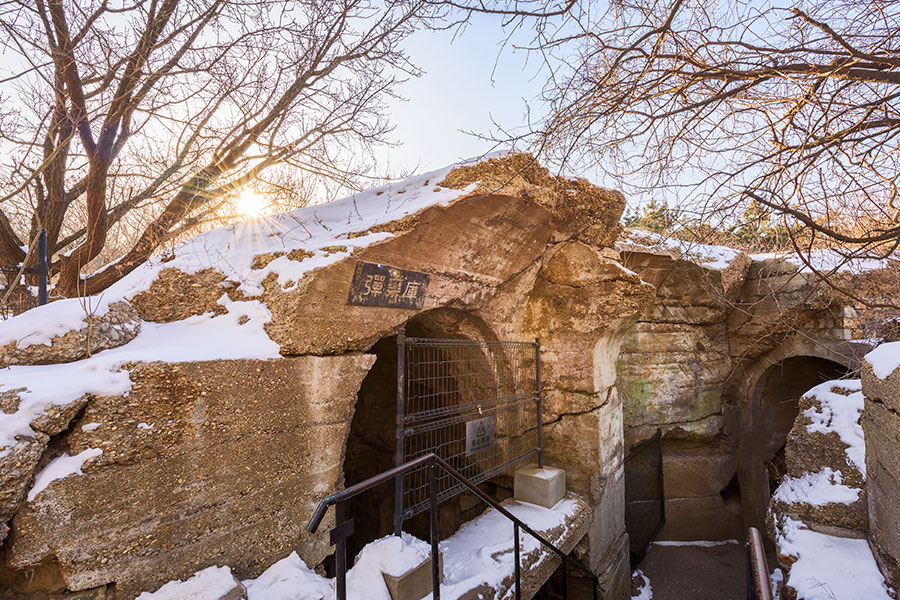East Cockscomb Hill / Dongjiguan Fortress

Chinese name: 东鸡冠山 (Dongjiguan Shan)
Location: On the northeast of Lvshunkou District, Dalian, Liaoning Province, China.
Ticket: CNY20.
Opening time: 08:00-17:00.
How to get there: There is no public bus to the scenic area, and attractions are scattered in the scenic area. So it is highly recommended that you hire a car to there if you go independently, and a toll of CNY10 will be asked to pay.
Brief introduction to East Cockscomb Hill
Located on the northeast of Lushengkou District, the East Cockscomb Hill was the major battlefield of Russo-Japanese War in 1904. Therefore, a number of historical sites are found in the East Cockscomb Hill, such as the Exhibition Hall of Russo-Japanese War, North Fortress, Erlong Mountain Fortress, Wangtai Fortress, etc. In order to occupy Lvshun City, Russia and Japan started a bloody war in the East Cockscomb Hill in 1904, and the Wujia Village at the foot of the hill was suffered from the war; among 80 houses, only five houses were survived. The East Cockscomb Hill has been included into Provincial Key Cultural Relics Protection Units.
What to see in East Cockscomb Hill ?
---Exhibition Hall of Russo-Japanese War
In order to possess the East Cockscomb Hill, the Russian and Japanese troops waged a fierce battle in the hill. The Exhibition Hall of Russo-Japanese War records the history of Russo-Japanese War with a number of historical pictures, objects, and videos. The crime of imperialists’ invasion into China is revealed fully.
---East Jiguanshan North Fortress
The East Jiguanshan North Fortress was first built by tsarist Russia in 1900 with concrete and cobblestones. It is covered with a two-meter-thick layer of sandbags and soils. It has a complicated structure, including headquarters, soldiers’ dormitory, ammunition depot, bunker, side bunker, tunnel, stairwell, etc. The fortress is in a pentagonal shape surrounded by a trench measuring 6 meters deep and 8 meters wide. Outside the trench is a grid system on the hillside. During the Russo-Japanese War, about 900 Japanese soldiers injuried or died in order to seize the fortress.

---Wangtai Fortress
Wangtai Fortress is the last batter field for Japan and czarist Russia fought for Lvshun City of China. Two cannons were left behind by Russia Army, which was casted with a firing range of 10 km in 1899 by an Obukhov steel works. The two cannons were carried up to the hill by 2,000 Chinese labors forced by Russia Army. In 1905, the Japanese Army occupied the Wangtai Fortress, announcing the ending of land battle in Lvsheng.
---Erlong Mountain Fortress
Erlong Mountain was first built by Qing Government before the Sino-Japanese War of 1894. It witnessed the Sino Japanese War and the Russo-Japanese War. Jiang Guiti, the commander of Chinese Army once led four troops to resist against Japanese Army. In 1904, after Russia’s invasion to Lvshun, the Russian troops expanded the fortress to 3,000 square meters. The Russo-Japanese War lasted two months in the Erlong Mountain Fortress and ended up with the victory of Japanese.
Quick Questions
Our team is waiting for your questions. Please feel free to ask us any questions you might have about our China package tours, Chinese culture, or the sites available. We will gladly help you with any special needs you might have and all questions, like our trip designing is completely free of charge.





